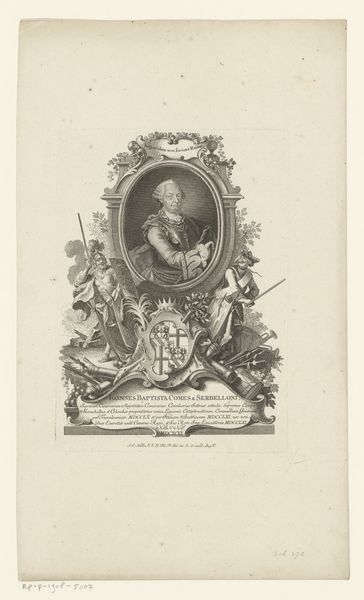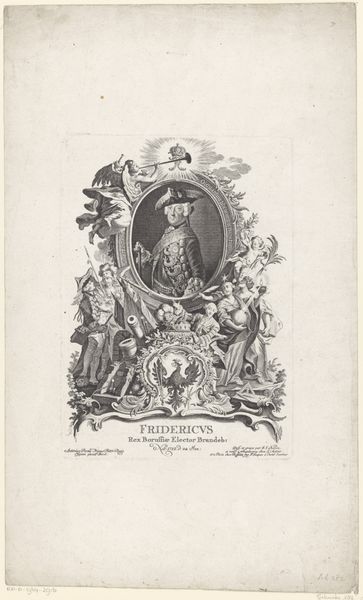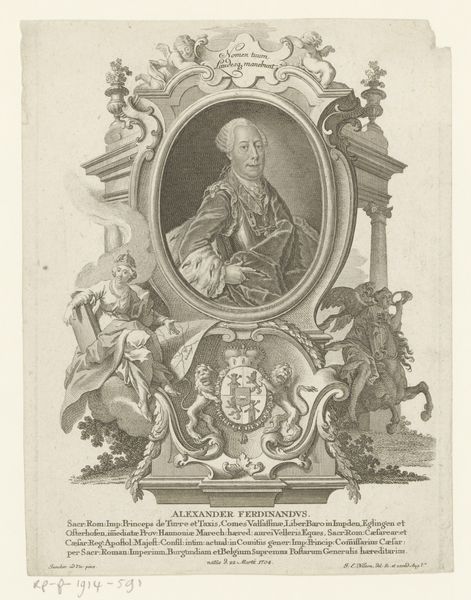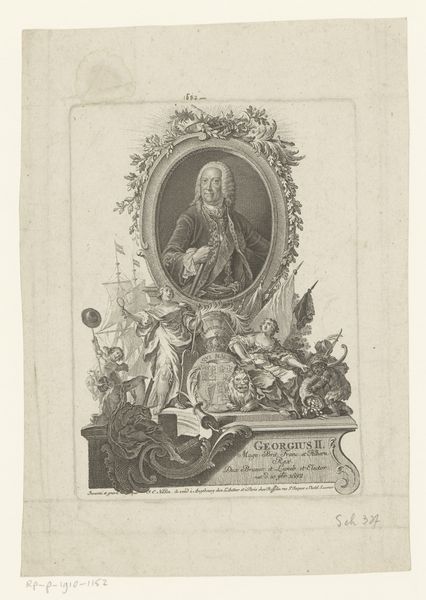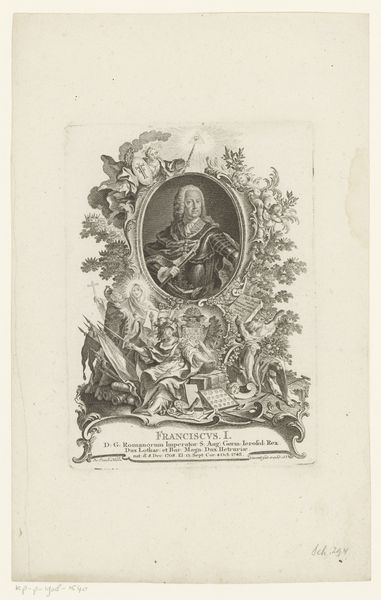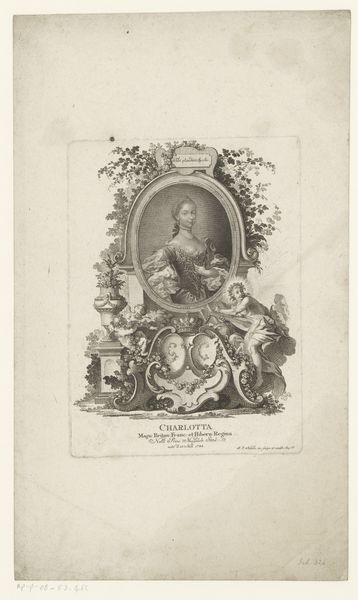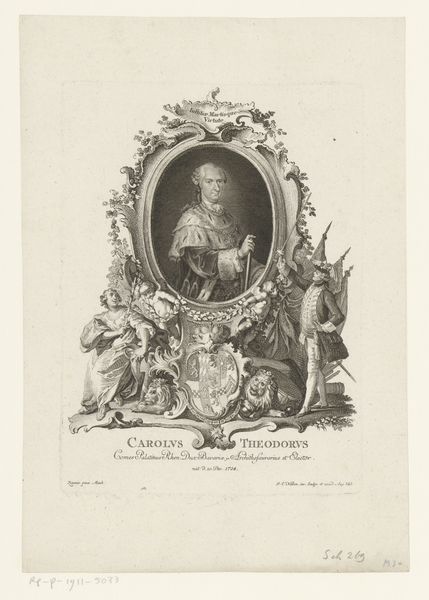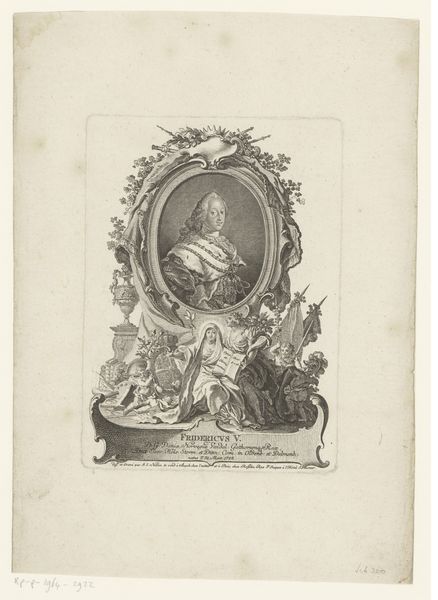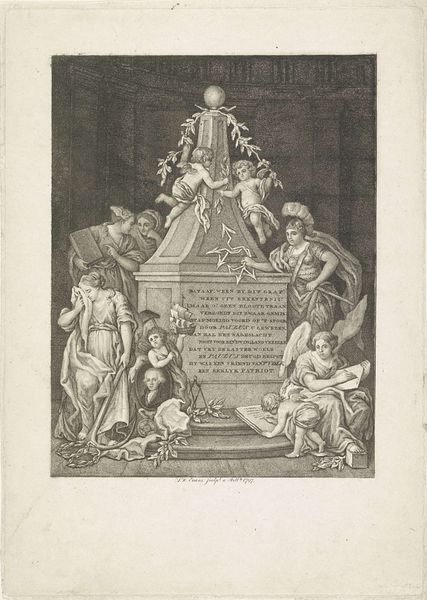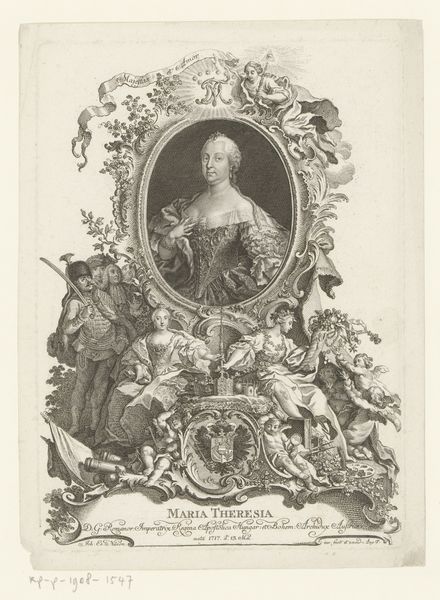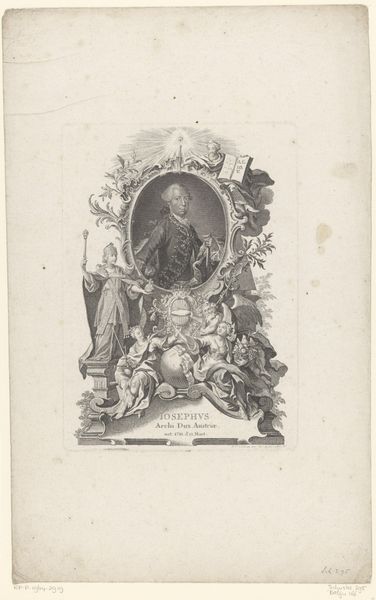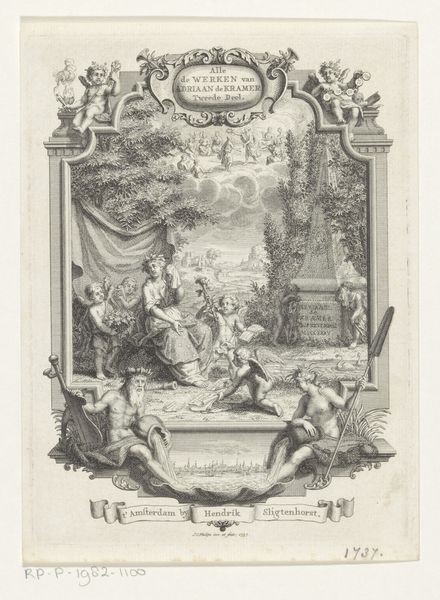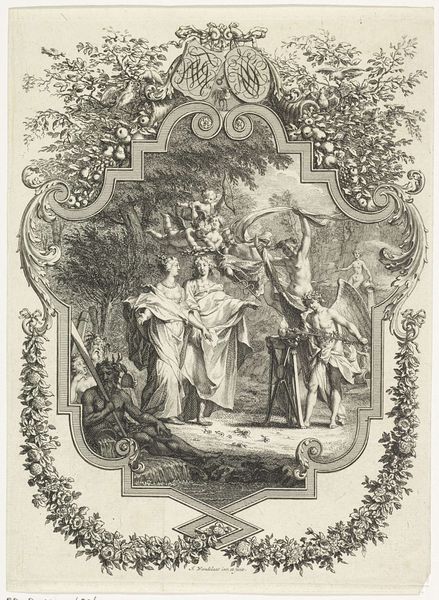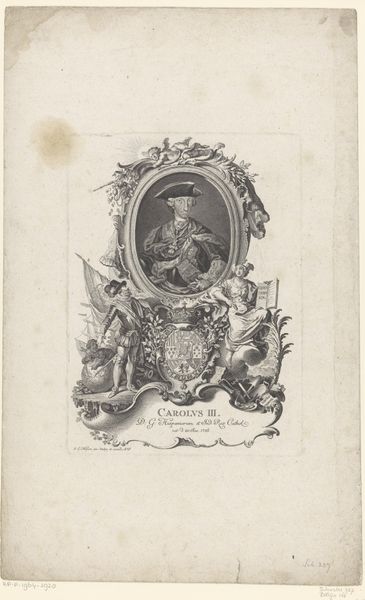
Dimensions: height 219 mm, width 160 mm
Copyright: Rijks Museum: Open Domain
Johann Esaias Nilson's portrait of Karl Eugen von Württemberg is rich with symbols of power and authority, made using etching. Encircling the Duke's image, the laurel wreath—an ancient emblem of victory and honor—connects him to classical ideals of leadership and triumph. Below the Duke, a figure leans on the Wurttemberg coat of arms, a clear reference to the seat of power in the region. Such personifications of states appear throughout antique and renaissance art, most notably in Roman coins and Northern European maps. This classical imagery of power is far from static, however. These symbols speak to the human desire for order and control, echoing through time and across cultures. These iconographic elements reveal the enduring need to legitimize power and authority through visual means. This portrait engages us on a deeply subconscious level, triggering collective memories of leadership, power, and societal order. It reminds us of the cyclical nature of history, where symbols are continually reborn, adapted, and imbued with new meanings.
Comments
No comments
Be the first to comment and join the conversation on the ultimate creative platform.
